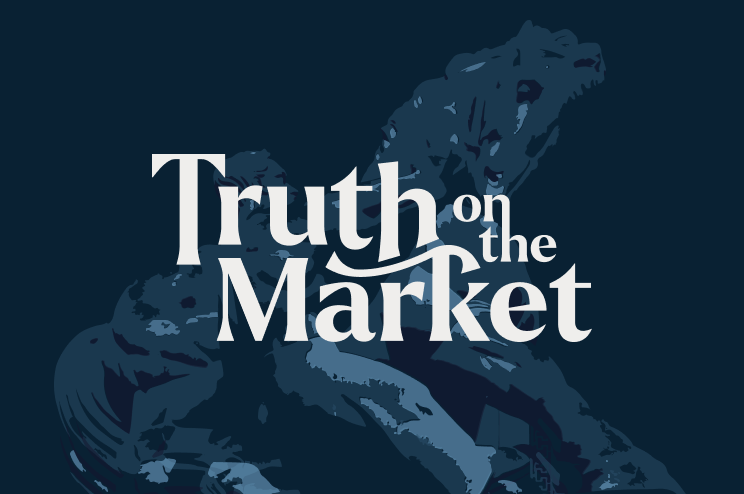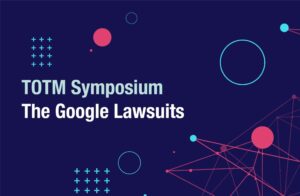Showing archive for: “Structure–Conduct–Performance”
The folly of the FTC’s Section Five case against Google
In the past weeks, the chatter surrounding a possible FTC antitrust case against Google has risen in volume, thanks largely to the FTC’s hiring of litigator Beth Wilkinson. The question remains, however, what this aggressive move portends and, more importantly, why the FTC is taking it. It is worth noting at the outset that, as ... The folly of the FTC’s Section Five case against Google
The NYT on non-lawyer-financed law firms
The NYT has finally caught onto non-lawyer financing of law firms, and specifically the possibility of Wal-Mart lawyers, now being ushered in by England’s new Legal Services Act. As the article notes, “[s]uch a move could upend the industry’s stiff adherence to the partnership system in favor of full-fledged corporations that have access to the ... The NYT on non-lawyer-financed law firms
FDA Medical Device Approval
The New York Times today has an article on approval of medical devices. The take is that venture capitalists want a more efficient process. The tradeoff mentioned is between faster approval for investor returns versus safety of devices if they are approved faster. There is no mention in the article of the benefits to patients ... FDA Medical Device Approval
Renee Newman Knake on Corporations, the Delivery of Legal Services, and the First Amendment Part II
In Part I of this post, I identified a jurisprudential thread of cases that suggest corporations have a First Amendment right to own and invest in law practices for the delivery legal services. These decisions include NAACP v. Button, the union trilogy, and Bates v. State Bar of Arizona. Two recent cases shed light on ... Renee Newman Knake on Corporations, the Delivery of Legal Services, and the First Amendment Part II
Renee Newman Knake on Corporations, the Delivery of Legal Services, and the First Amendment Part I
Last month the New York Times ran an editorial with the headline “Addressing the Justice Gap,” observing that “the poor need representation and thousands of law graduates need work.” The piece proposed several solutions, but notably absent was the reform most likely to deliver legal services to those in need and to create jobs for ... Renee Newman Knake on Corporations, the Delivery of Legal Services, and the First Amendment Part I
Undermining Community for Specious Public Health Benefits
We classical liberals are often criticized for undermining communitarian values by emphasizing individual liberties. In reality, though, a liberal society (in the classical sense, not the welfare-state sense) fosters community by allowing people to associate in ways they find most meaningful. Indeed, one of the great things about a liberal, live-and-let-live city is that it ... Undermining Community for Specious Public Health Benefits
Senate Judiciary Hearing on AT&T / T-Mobile Merger
The hearing is Wednesday morning. The Witness List suggests that the hearing will primarily serve as an opportunity for the merging parties, rivals, other interested parties, and lets not forget the Senators, to restate their positions “for the record.” And while I get where the Committee is going with the “Humpty Dumpty” title, “the T-1000 ... Senate Judiciary Hearing on AT&T / T-Mobile Merger
Declaring Victory or Premature Celebration?
Russell Korobkin (UCLA) provocatively declares the ultimate victory of behavioral law and economics over neoclassical economics: I am declaring victory in the battle for the methodological soul of the law and economics discipline. There is no need to continue to pursue the debate between behavioralists (that is, proponents of incorporating insights previously limited to the ... Declaring Victory or Premature Celebration?
Against Consumer Choice as an Antitrust Standard (Some Preliminary Thoughts)
The “consumer choice” approach to antitrust is increasingly discussed in a variety of settings, and endorsed by regulators and in scholarship, especially but not exclusively in the Section 5 context. The fundamental idea is that the “conventional” efficiency approach embedded in the total and/or consumer welfare standards is too cramped and does not measure the ... Against Consumer Choice as an Antitrust Standard (Some Preliminary Thoughts)
Alternative careers in law
Conventional law jobs might be getting harder to find, but there are alternatives, as I noted in my work-in-process with Bruce Kobayashi described here. Recent news stories suggest the range of options. Financing divorce cases Here’s the NYT story about Balance Point Divorce Funding, with more from Christine. As the Times story notes, this is ... Alternative careers in law
The Microsoft-Google Antitrust Wars and Public Choice: There is Too An Argument Against Rival Involvement in Antitrust Enforcement
How should an economist interpret the fact that Microsoft appears to be “behind” recent enforcement actions against Google in the United States and, especially, in Europe? “With skepticism!” Is the answer I suspect many readers will offer upon first glance. There is a long public choice literature, and long history in antitrust itself, that suggests ... The Microsoft-Google Antitrust Wars and Public Choice: There is Too An Argument Against Rival Involvement in Antitrust Enforcement
The Roberts Court and the Limits of Antitrust
I’ve just finished a draft of a paper for an upcoming conference on the Roberts Court’s business law decisions. Volokh blogger Jonathan Adler, who directs the Center for Business Law and Regulation at Case Western, is organizing the conference. The other presenters are Adam Pritchard from Michigan (covering the Court’s securities decisions), Brian Fitzpatrick from ... The Roberts Court and the Limits of Antitrust





